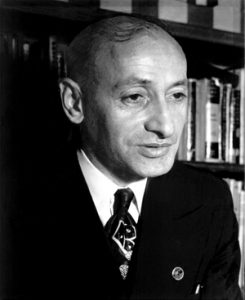Leyzer Ran — Association of Jews of Vilna and vicinity in Israel
Leyzer Ran
 Return to "Jerusalem of Lithuania": A Stroll through the Leyzer Ran Collection Archive/by Mordechai [Motti] Zalkin
Return to "Jerusalem of Lithuania": A Stroll through the Leyzer Ran Collection Archive/by Mordechai [Motti] Zalkin
As mentioned, Leyzer Ran aspired to preserve all the features found in the human gallery of the Jewish communities. Tis is the background, for example, for the many documents whose subject is the world of the cantors who lived and worked in the Jewish community of Eastern Europe. Likewise, the world of the children of the shtetl also found a place in this archive. An interesting collection of children’s games and children’s songs is found in the material that Kalman Mendel from the town of Shkodvil in Lithuania collected in 1933. Tis material is important for many reasons, including the fact (noted by Mendel) that the material for this collection of children’s games and songs was gathered from different towns in Lithuania (Kleme, avrig) and it presents a unique aspect of the world of the Jewish children in the last decade of the nineteenth century.
Contact us:
Contact
Directions: Beit Vilna, 30 Sderot Yehudit, Tel-Aviv.
Mailing address: P.O.Box 1005, Ramat Hasharon, 4711001. [email protected].
Tel. 03-5616706
[email protected]
Accessibility Statement

